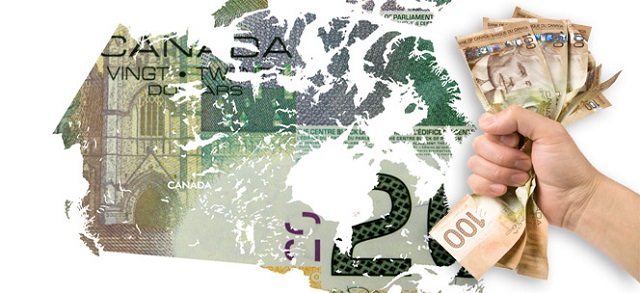Business
Carbon tariff proposal carries risks and consequences for Canada

A carbon tariff—a policy that would impose fees on imported goods based on their carbon emissions—is built on the idea that Canada should penalize foreign producers for not adhering to stringent climate policies. While this may sound like a strong stance on climate action, the reality is that such a policy carries major risks for Canada’s economy. As a resource-rich nation that exports carbon-intensive products like oil, natural gas, and minerals, Canada stands to lose more than it gains from this approach.
Mark Carney, who is competing for the federal Liberal leadership, has made the introduction of a carbon tariff the number two promise in his 16-point industrial competitiveness strategy.
Key problems with a carbon tariff in Canada
1. Retaliation from other countries
A carbon tariff (also known as a Carbon Border Adjustment Mechanism, or CBAM) would not go unchallenged by Canada’s trading partners. Major exporters to Canada, such as the United States and China, are unlikely to accept this policy without a response. They could retaliate by imposing tariffs on Canadian goods, making it significantly harder for Canadian businesses to compete in international markets. This could be particularly damaging for key industries like oil and gas, mining, and manufacturing, which rely heavily on exports. A trade war over carbon tariffs could weaken the Canadian economy and lead to job losses across multiple sectors.
2. Canada is an exporting nation
Canada exports far more carbon-intensive goods than it imports. By introducing a carbon tariff on foreign products, Canada is effectively inviting other countries to do the same, targeting Canadian exports with similar carbon-based tariffs. This would make Canadian goods more expensive on the global market, reducing demand for them and harming the very industries that drive Canada’s economy. The result? A weaker economy, job losses, and higher costs for businesses that depend on trade.
3. Big business paying for consumers’ emissions
The Carney plan also proposes to make large businesses bear the cost of helping individual households lower their carbon emissions. While this may sound like a fair approach, in practice, these costs will be passed down to consumers. Businesses will need to offset these additional expenses, leading to higher prices on everyday goods and services. In the end, it is Canadian families who will bear the financial burden, facing increased living costs, higher taxes, and fewer job opportunities as businesses struggle to absorb the additional costs.
CBAM in context: implications for Canada
Has this been tried elsewhere?
The European Union’s Carbon Border Adjustment Mechanism (CBAM) is currently in effect. It entered its transitional phase on October 1, 2023, during which importers of certain carbon-intensive goods are required to report the embedded emissions of their imports without incurring financial liabilities. This phase is set to last until the end of 2025. The definitive regime, where importers will need to purchase CBAM certificates corresponding to the carbon emissions of their imported goods, is scheduled to begin in 2026.
However, Europe is not Canada’s largest trading partner—that is the United States. With Donald Trump back in the presidency, there is no chance that the U.S. will implement a CBAM of its own. If Canada were to move forward with a unilateral carbon tariff, if anyone prepared to argue that it would not face significant economic punishment from the Trump White House?
Moreover, with 91 percent of the world having no carbon tariff, other countries would impose countermeasures, leaving Canadian businesses struggling to remain competitive.
This raises the question: is the push for a carbon tariff in Canada more about political positioning than economic pragmatism? Given the unlikelihood of U.S. participation, a Canadian CBAM would amount to a unilateral economic sacrifice. While this may appeal to certain voter bases, the reality is that such a policy would carry immense risks without global coordination. Policymakers should carefully consider whether pursuing this path makes sense in a world where Canada’s largest trading partner is unlikely to follow suit.
Where do others stand?
Chrystia Freeland, the former finance minister and current Liberal leadership candidate, has not explicitly detailed her stance on carbon tariffs. However, she has emphasized the importance of defending Canadian interests against U.S. economic nationalism, particularly in response to potential tariffs from the U.S.
Conservative leader Pierre Poilievre is a vocal critic of carbon pricing mechanisms, including carbon taxes, and has pledged to repeal such measures if elected.
Elizabeth May, leader of the Green Party, has consistently advocated for strong environmental policies, including carbon pricing, but has not specifically addressed carbon tariffs in recent statements.
What it means to consumers
Here are some relatable examples of carbon-intensive exports and imports for the average Canadian:
Carbon-Intensive Exports from Canada
Oil & Gas – Canada is a major exporter of crude oil, natural gas, and refined petroleum products, particularly to the U.S. If a carbon tariff were applied to these products, it could make them more expensive and less competitive in global markets, affecting jobs in Alberta, Saskatchewan, and Newfoundland.
Lumber & Pulp – Canada is a leading exporter of forestry products, including lumber, paper, and pulp, which require significant energy and emissions to produce. If tariffs are imposed on Canadian wood products, the forestry sector could suffer.
Agricultural Products – Fertilizers, beef, and grain production all have significant carbon footprints. If trading partners retaliate with tariffs, Canadian farmers may struggle to compete in global markets.
Carbon-Intensive Imports into Canada
Steel & Aluminum – Canada imports a large amount of steel, primarily from China and the U.S., which is essential for industries like construction, manufacturing, and automotive production. A carbon tariff would drive up costs for these industries.
Consumer Goods from China – Many everyday products (electronics, clothing, appliances) are imported from countries with high-carbon electricity grids. A carbon tariff could increase the price of these goods for Canadian consumers.
Food Products – Imported produce, meats, and packaged foods from countries like the U.S. and Mexico often have high transportation-related emissions. A carbon tariff could increase grocery bills.
2025 Federal Election
Trudeau and Carney Have Blown $43B on EVs
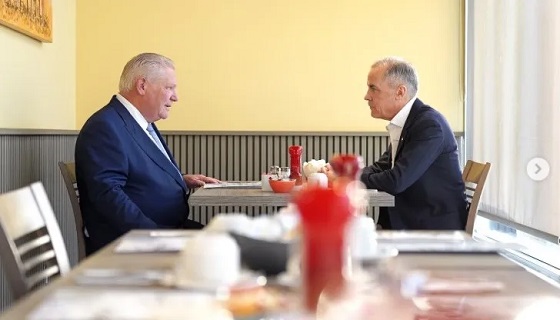
 David Krayden
David Krayden
General Motors laid off 500 workers at his Electric Vehicle (EV) plant in Ingersoll, ON.
It had nothing to do with the tariffs.
It had everything to do with the plummeting fascination that Canadians have for EVs. They are selling like used Edsels in the late 1950s. In a useless attempt to create a demand for these “green” vehicles (which aren’t actually green at all because the production of electricity does not result from magic) the governments of former Prime Minister Justin Trudeau and Ontario Premier Doug Ford wasted $42 billions of your tax money. And it was all to bolster an ideology not a demand for cars. There is no demand for these vehicles.
“You just lost 500 jobs. They’ve nuked those jobs. They’re not there anymore.”
-Dan McTeague

Ford, who saw this coming when he called an early provincial election that he knew he probably was going to lose if he waited for the anticipated vote, was actually honest to reporters when he admitted the layoffs had nothing to do with the dreaded Trump tariff but everything to do with public taste.
“What I understand from the president of General Motors that I spoke to, it’s going to be about 500 employees. Has nothing to do with the tariffs. He said, the volume is not there. People are not purchasing like they thought they would. So, they have thousands of vehicles sitting there. We make sure we support the workers and make sure that we get the government, especially Canada Post, to pick up some of these vehicles, because that’s what it’s geared for you.”

So, Ford expects Canada Post, another government agency on its last legs, to come to the rescue and pick up all these excess EVs? Sounds like it. The irony is that Ford came into office largely because the previous Liberal government had gone hog wild with its green energy program and hydro rates were among the highest in North America. Ford used to say that a industrialized province like Ontario can’t possibly prosper or even subsist on the energy provided by windmills and solar panels. He was right then but over the years he became firmly ensconced in the pocket of Trudeau and the Liberals, just as he is today with Mark Carney.

I spoke to my old friend Dan McTeague on Saturday about this mess. McTeague is a former Liberal MP from the GTA who is the president of Canadians for Affordable Energy today and well known for predicting gas prices across Canada as the @ gaspricewizard on X. As an MP, he always put principal above expediency, and he is no different today. McTeague is anxious for a Conservative Party of Canada (CPC) victory in this federal election and he is actively campaigning for a CPC nominee.

McTeague was not surprised over the dismal outlook for EVs.
“This is about Pierre Poilievre saying your policies are garbage. They’ve hurt Canadians. They’ve undermined the financial feasibility and sustainability of the federal government and the provincial government, and we’re going to get rid of them, just like we’re going to get rid of the CBC.”
-Dan McTeague
“Well, on the 22nd of March after having gone to the Ingersoll plant. I just tweeted a little while ago. I actually went there, filmed what was there in inventory. There were thousands of these vehicles just sitting there doing nothing. Obviously, Doug Ford didn’t get it on the 22nd of March. I said it says a lot about why the Ford nation is giddy about supporting Carney, he’s committed billions in world EV and battery manufacturing like this one in Ingersoll, where the provincial Feds kicked in over half a billion for bright drops. Was supposed to sell 100,000 units. Only sold 2100 actually, it got wrong. It was 2500 they might have probably given that a few away there. But look, this is anticipating what was there. It’s pretty obvious. I mean, I don’t just predict gas prices. Pretty good idea policies, EV mandates, the entire nets,” McTeague said.
McTeague explained that the “EV mandates are toast,” not just because President Donald Trump eliminated them but because they simply never had traction with consumers. He noted that Carney is playing games with the consumer carbon tax – because he hasn’t eliminated it but merely reduced it temporarily to zero – and has continued to keep emissions caps in place.
“Why are they doubling down on forcing us to have California-style appliances, which are extraordinarily costly to consumers. There are thousands of these things that are coming up. GFANZ, the Glasgow Financial Alliance for Net Zero that Mark Carney put forward, is now subject to antitrust review in the United States. This guy could be charged and billions of dollars taken away from the GFANZ organization,” McTeague said, adding that “anybody who hopped on the bandwagon a few years ago on net zero is now looking pretty damn foolish, and it’s amazing to see so many stunned Canadians falling in for this.”
“You just lost 500 jobs. They’ve nuked those jobs. They’re not there anymore.”

The former Liberal MP said the EV program is just one example of a failed economic record from the Trudeau-Carney regime. “However you slice it, the Liberals have had 10 years of failed policies. Net Zero has laid an egg. It’s not doing anything. And what they’re going to try to do is use a lot more public money and hopefully put enough wool over everyone’s eyes, so that we continue to go down this road of more recklessness as a result of what we’ve seen on EVs.
“Anybody who hopped on the bandwagon a few years ago on net zero is now looking pretty damn foolish, and it’s amazing to see so many stunned Canadians falling in for this.”
McTeague also wondered how the Ontario premier has moved from a commonsense politician on green energy to a cheerleader for Trudeau’s environmental authoritarianism. “For Doug Ford to have signed onto this. I mean, Shame on him, but it probably explains why he doesn’t want to support Pierre Poilievre.”
Said McTeague: “This is about Pierre Poilievre saying your policies are garbage. They’ve hurt Canadians. They’ve undermined the financial feasibility and sustainability of the federal government and the provincial government, and we’re going to get rid of them, just like we’re going to get rid of the CBC.”
“And so, for those reasons, you’re going to see why people are not supporting Pierre Poilievre, because they know, you know, they know which side of the bread is going to get buttered and for guys like Doug Ford, Bad mistake, back the wrong horse, and now we’re holding the bag. That’s why he called the election early.”
McTeague said the federal election is a watershed moment for people to decide what kind of future they want: prosperity or poverty. “If Canadians can’t get their head out of the sand and realize that they’re being duped that they can’t afford, you know, the saddling of the debts that these things are incurring for generations to come, and they think that somehow crapping on pipelines or putting emission caps that won’t allow us to make any more oil or gas to send these pipelines that they now suddenly have discovered are important … If we don’t wake up real soon, next two weeks, I can say confidently the next four years is basically cutting people.”
The energy expert predicted that the worst if yet to come if Carney wins a mandate to govern from the voters. “Nothing has changed, if anything, Mr. Carney and his company, as we well know, has lied on so many fronts. And here’s the big one that I’m going to say it here now, because I’ve said it many places before, but to be absolutely clear, you’re going to get a carbon tax, and that 20 cents you think you’re getting off. It’s going to be 40 cents by 2030, likely by the end of another government, “should they form a majority government.”
McTeague cautioned against Canadians becoming deluded and declaring, “Oh, we’re not worried about the future; we just don’t like Donald Trump, and we think Pierre Poilievre is like him.” Give your head a shake — because you know what, I’m going to spend a lot of time over the next few years, pointing back to the stupidity and frivolity of people. And make no mistake, David, these people know what they’re doing. They’re just trying to be cool and friendly because they made mistakes in 2015, 2019 and again in 2021 and they want to somehow think that they can justify bad decisions. What’s coming at the expense of the country? Coming at the expense of our economic sustainability? It’s likely coming at the expense of what concerns me even more so: the future of the federation of this country.”
“I’ve said it many places before, but to be absolutely clear, you’re going to get a carbon tax, and that 20 cents you think you’re getting off. It’s going to be 40 cents by 2030.”
Dan and I also discussed how he has discovered that much of the polling being conducted during this campaign is over-sampling people over 60, which comprise at least 50 percent of the respondents included in the surveys. This bodes well for Poilievre and the Conservatives.
Tomorrow I will be examining how the Consevatives are appealing to working class Canadians, labor union leaders and blue collar workers. Seeking and winning the “hard hat vote” worked for President Richard Nixon in 1972 and President Ronald Reagan in 1984. It can work for Poilevre too in 2025 — and somehow I think he realizes that.
WATCH: The Ugly Truth About Carney: Trudeau Subsidies Fail
CHECK OUT OUR KR NEWS INVESTIGATIVE SERIES ON MARK CARNEY

Rich Banker Man Mark Carney Caught by CBC & CTV Dodging Taxes

Liberal MP Encouraged the Abduction of Conservative Rival for Chinese Bounty

KR NEWSLETTER: Mark Carney to “Fold” “After the vote.” Carney’s Wife’s Eurasia Group Boss Spills the Beans on the Liberals’ “Elbows Up” Master Plan

GFANZ, Mark Carney’s Climate Cabal That Won’t Leave Us Alone

Mark Carney’s is China’s Man

KRN NEWSLETTER: Mark Carney Deep Dive + Disastrous Liberal Leadership Debates
2025 Federal Election
Poilievre will make it harder for politicians to boost their portfolios, close Carney loopholes
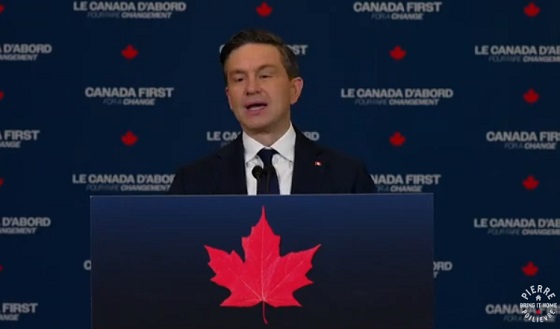
From Conservative Party Communications
Canada can’t afford a fourth term of Liberal waste and scandals, says Poilievre, pledging an end to conflicts of interest, shadow lobbying and politicians using tax loopholes. Our plan will clean house with strong laws that end corruption and waste and put Canadians First—For a Change.
Conservative Leader Pierre Poilievre announced his plan to strengthen the Accountability Act to end the Lost Liberal Decade of corruption and insider dealings in Ottawa. The new rules will close loopholes like the one that Mark Carney used to be appointed as an ‘unpaid advisor’ and set government policy while he lined his own pockets.
“Mark Carney is already the most conflicted Prime Minister in Canadian history,” Pierre Poilievre said. “His conflicts touch everything – from his business interests in nuclear energy to real estate to income tax laws. He has a long record of putting his interests first when he was supposed to be working for you. The last ten years have been about the Liberals, the next decade should be about you–For a Change.”
Poilievre outlined the highlights of his plan:
- Ban shadow lobbyists and close the Carney loophole by requiring anyone advising the government directly or indirectly, who stands to gain financially from their advice, to register as a lobbyist.
- Ban politicians from making decisions that benefit themselves or their families disproportionately, and require Ethics Commissioner approval and full public disclosure of all personal interests.
- Increase fines for ethics violations to $10,000.
- Tax transparency. Require anyone running for public office to disclose where they paid taxes for the last seven years.
- Require cabinet ministers to divest fully from tax havens and disclose assets to the Office of the Conflict of Interest Commissioner, with penalties for non-compliance. No more so-called blind trusts that only blind the public.
- Require party leaders to disclose their assets within 30 days of becoming leader and require Prime Ministers to divest their assets within 30 days of assuming office.
After being appointed as Trudeau’s senior economic advisor, Mark Carney never had to register as a lobbyist, disclose his conflicts of interest or answer to Canadians. He was able to advise the government behind closed doors despite media reports that he had a history of using such advisory positions to benefit Brookfield, the company he chaired, financially.
As an advisor to the UK government, he lobbied for expanded heat pump subsidies that would have benefited a heat pump company that Brookfield owned. The chairman of the company even admitted “Mark is working on our behalf in Government.”
As Prime Minister, Carney benefits from hiding his Brookfield funds in offshore tax havens because the current rules don’t require him to sell them, which is the only way to prevent a conflict of interest. The current rules let him get away with moving his assets into a so-called blind trust, but the only people who are left “blind” are Canadian voters, while Carney knows what is in the trust because he put it there.
“Under the Lost Liberal Decade, political insiders have cashed in while Canadians have lost out,” Pierre Poilievre said. “From insiders lobbying to escape criminal charges to hundreds of millions of your money given to well-connected firms who don’t even do the work they were hired for. It’s unethical, and it needs to be stopped.”
Canadians can’t afford a fourth Liberal term where well-connected insiders and Carney’s personal interests get a pass, while hard-working Canadians get the bill. We need to restore accountability with a new Conservative government that will end corruption and put Canada First – For a Change.
-

 Alberta2 days ago
Alberta2 days agoProvince introducing “Patient-Focused Funding Model” to fund acute care in Alberta
-

 COVID-192 days ago
COVID-192 days agoMassive new study links COVID jabs to higher risk of myocarditis, stroke, artery disease
-

 Alberta2 days ago
Alberta2 days agoMedical regulator stops short of revoking license of Alberta doctor skeptic of COVID vaccine
-

 International2 days ago
International2 days agoUN committee urges Canada to repeal euthanasia for non-terminally ill patients
-

 2025 Federal Election24 hours ago
2025 Federal Election24 hours agoConservative Party urges investigation into Carney plan to spend $1 billion on heat pumps
-
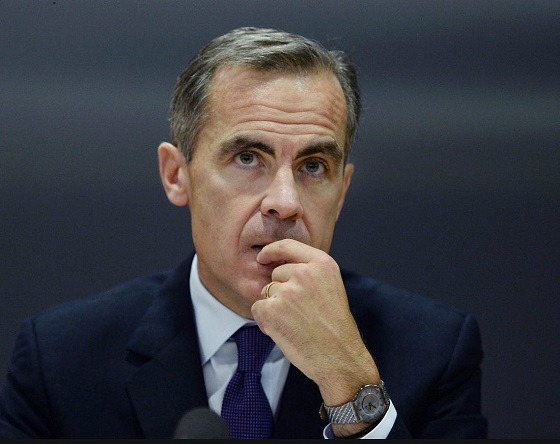
 2025 Federal Election1 day ago
2025 Federal Election1 day agoFifty Shades of Mark Carney
-

 MacDonald Laurier Institute2 days ago
MacDonald Laurier Institute2 days agoRushing to death in Canada’s MAiD regime
-
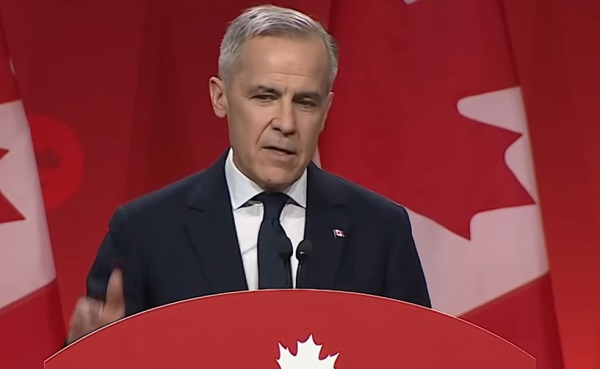
 2025 Federal Election1 day ago
2025 Federal Election1 day agoCommunist China helped boost Mark Carney’s image on social media, election watchdog reports





